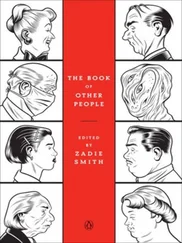JAMES BUTLER HICKOK (gunfighter)
When ‘Wild Bill’ Hickok entered Deadwood, South Dakota, in June of 1876, he had a premonition that he would never leave the gulch alive. On August 2 he was playing poker with three friends in a saloon, laughing and having a good time. Normally Hickok sat with his back to the wall, but that afternoon Charlie Rich had taken Bill’s seat to tease him and had refused to give it up. Jack McCall, whom Hickok had defeated at poker earlier that day, entered the saloon, drew a .45-calibre Colt and shot Wild Bill Hickok through the back of the head, killing him instantly. Wild Bill, who was 39 years old, was holding two pairs, aces and eights, a hand that has since been known as ‘the dead man’s hand’. He died with a smile on his face.
AL JOLSON (entertainer)
Jolson suffered a heart attack while playing gin rummy with friends in his room in San Francisco’s St Francis Hotel on the night of October 23, 1950. He was 64 years old.
BUSTER KEATON (comedian)
Keaton was stricken by a seizure late in the afternoon of January 31, 1966, while playing poker at his home in Hollywood. He expired the following morning at the age of 70.
ARNOLD ROTHSTEIN (gambler)
The man who fixed the 1919 World Series was playing poker in the suite Hump McManus occupied at the Park Central Hotel in New York City when he was shot in the stomach. Rothstein, who owed McManus $320,000 from a previous poker game, stumbled out of the building and was rushed to a hospital, where he refused to name the gunman before he died on November 4, 1928.
17 HEALTH EXPERTS AND HOW THEY DIED
STUART M. BERGER (1953–94) Age at death: 40
The 6 ft 7 in. Berger successfully reduced his weight from 420 to 210 lb. He described his techniques in such bestsellers as The Southampton Diet (1984) and Dr Berger’s Immune Power Diet (1986). Berger claimed that his diet would boost the immune system and promote longevity. He died in his New York City apartment from a heart attack brought on by cocaine abuse and obesity: at the time of his death he weighed 365 lb.
SYLVESTER GRAHAM (1794–1851) Age at death: 57
A clergyman and temperance leader, Graham believed that good health could be achieved through a strict regime which included cold showers, daily exercise and a vegetarian diet. In 1847 he spoke to an audience in Boston and triggered a near riot by butchers and bakers who were angered by his advocacy of vegetarianism and homemade bread. He was deeply shaken by the attack and his health began to decline. Treatment with stimulants, mineral water and tepid baths proved to be of no lasting help, and he died broken in body and spirit. He is remembered today chiefly for his creation of the Graham cracker, though the present-day commercial product — containing bleached flour, sugar and preservatives — would have horrified him.
EUGENE SANDOW (1867–1925) Age at death: 58
Through the application of scientific methods of muscle development, Sandow transformed himself from a weak youth into the ‘world’s strongest man’, as showbusiness promoter Florenz Ziegfeld billed him at the 1893 World’s Columbian Exposition in Chicago. In 1911 Sandow was appointed professor of physical culture to King George V. However, Sandow’s primary concern was to convince the average man that anyone could achieve strength and vigour by exercising for a little as 20 minutes a day. The strong man pushed himself beyond even his immense capacities when, without any assistance, he lifted a car out of a ditch after an accident. He suffered a severe strain and died soon afterward from a burst blood vessel in the brain. However, some believe that he actually died of syphilis.
ÉMILE COUÉ (1857–1926) Age at death: 69
Trained as a pharmacist, Coué became interested in hypnotism and developed a health treatment based on autosuggestion. He told his patients that their health would improve dramatically if, morning and evening, they would repeat faithfully: ‘Every day and in every way, I am becoming better and better.’ Prior to WWI, an estimated 40,000 patients flocked to his clinic each year and Coué claimed a 97% success rate. Coué kept up a demanding schedule. After one of his lecture tours he returned to his home in Nancy, France, and complained of exhaustion. He died there of heart failure.
NATHAN PRITIKIN (1915–85) Age at death: 69
Pritikin was diagnosed with heart disease in his mid-40s. Although he did not have a background in medicine, he spent the next 20 years researching diet and nutrition. He developed a low-fat, low-cholesterol and high-fibre diet that he credited with reversing his heart disease. In 1976 he opened the Pritikin Longevity Center in California to spread the word. He also published eight books on diet and exercise. His programme gained credibility in 1984 when the National Institutes of Health concluded that lowering cholesterol reduced the risk of heart disease. Unfortunately, at the same time, Pritikin developed leukaemia. The chemotherapy that he underwent to fight the cancer brought about anaemia, kidney failure and severe pain. On February 21, 1985, Pritikin committed suicide in his hospital bed by slashing his wrists with a razor. The leukaemia had probably been caused by a dubious medical technique that Pritikin underwent in 1957. His doctor had prescribed a series of X-ray treatments to destroy a fungal infection causing a skin rash. Afterwards, Pritikin was diagnosed with an elevated white blood cell count, a frequent precursor to leukaemia.
ADELLE DAVIS (1904–74) Age at death: 70
‘You are what you eat,’ claimed Davis, the well-known American nutritionist who advocated a natural diet rich in fresh fruits and vegetables along with large doses of vitamins. When she was diagnosed as having bone cancer at the age of 69, her first reaction was disbelief. ‘I thought this was for people who drink soft drinks, who eat white bread, who eat refined sugar, and so on,’ she said. Eventually she came to accept her illness as a delayed reaction to the ‘junk food’ eating habits she had acquired in college and which had lasted until the 1950s. Her hope was that those who had faith in her work would not be disheartened by her fatal illness.
MAX BIRCHER-BRENNER (1867–1939) Age at death: 71
One of the first exponents of proper nutrition, Bircher-Brenner advocated the ingestion of raw fruits and vegetables — ‘living’ food. He also believed that a patient’s mind played an important role in the cause of illness and that psychological as well as physical treatment was necessary to cure disease. A premature baby, Bircher-Brenner had been born with a weak heart which doctors said would prevent him from ever living a normal life. Through vigorous physical exercise and careful diet he had attained remarkable health as an adult, but the coronary weakness was not entirely overcome. On January 24, 1939, he died from a ruptured heart vessel.
ÉLIE METCHNIKOFF (1845–1916) Age at death: 71
Through extensive longevity research the Nobel Prize-winning bacteriologist concluded that the human body was meant to last 100 to 150 years. He became known particularly for his ‘Sour Milk Cure’, in which he advocated the consumption of yogurt to cleanse the large intestine. In addition, he discovered a bacterium (found only in the intestine of dogs) which he believed could further retard the aging process — and he proceeded to inoculate himself with the microbe. Shortly before his death from heart disease, Metchnikoff detailed in his diary the reasons for his untimely demise: ‘intense and precocious activities, fretful character, nervous temperament, and tardy start on a sensible regime’.
Читать дальше












